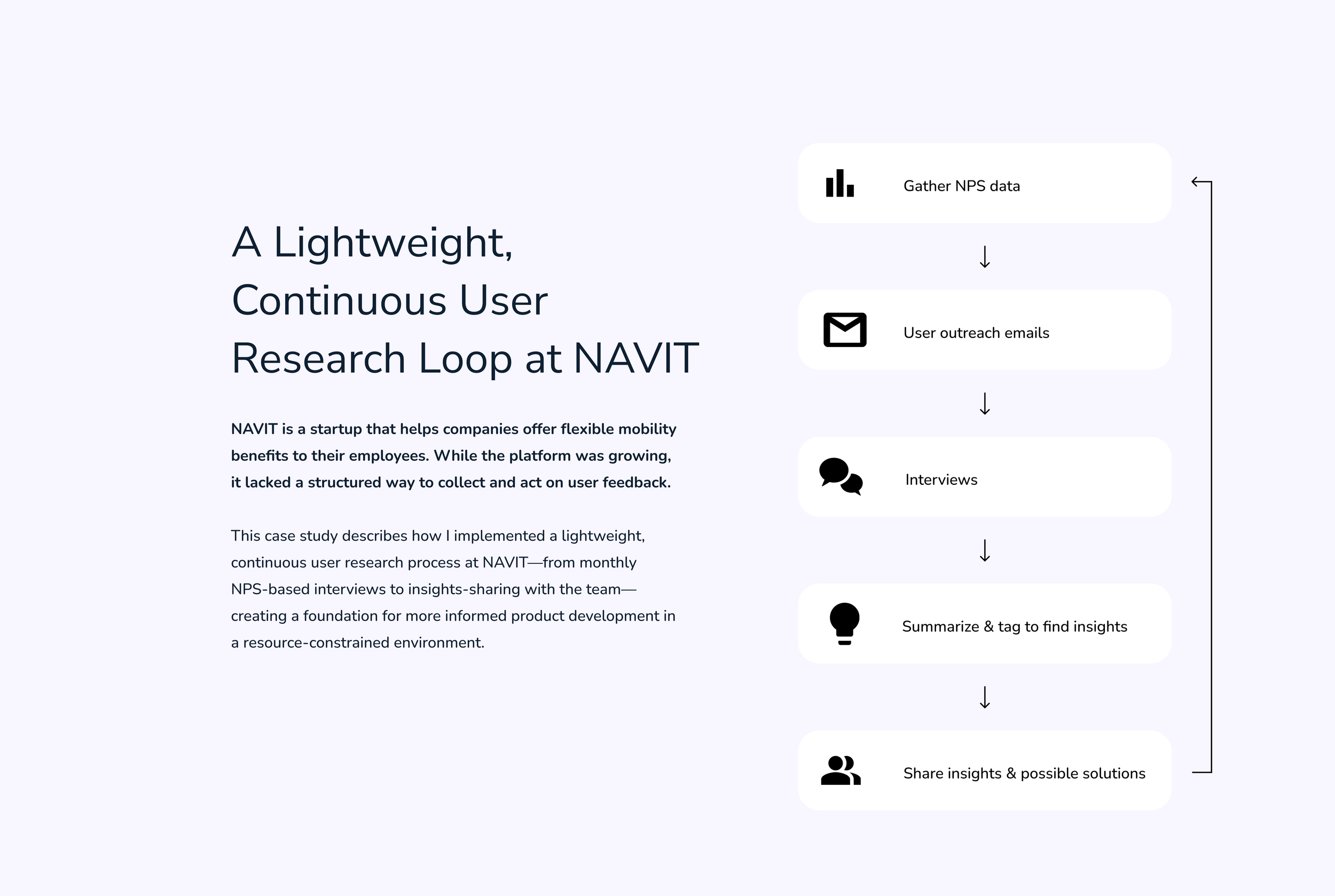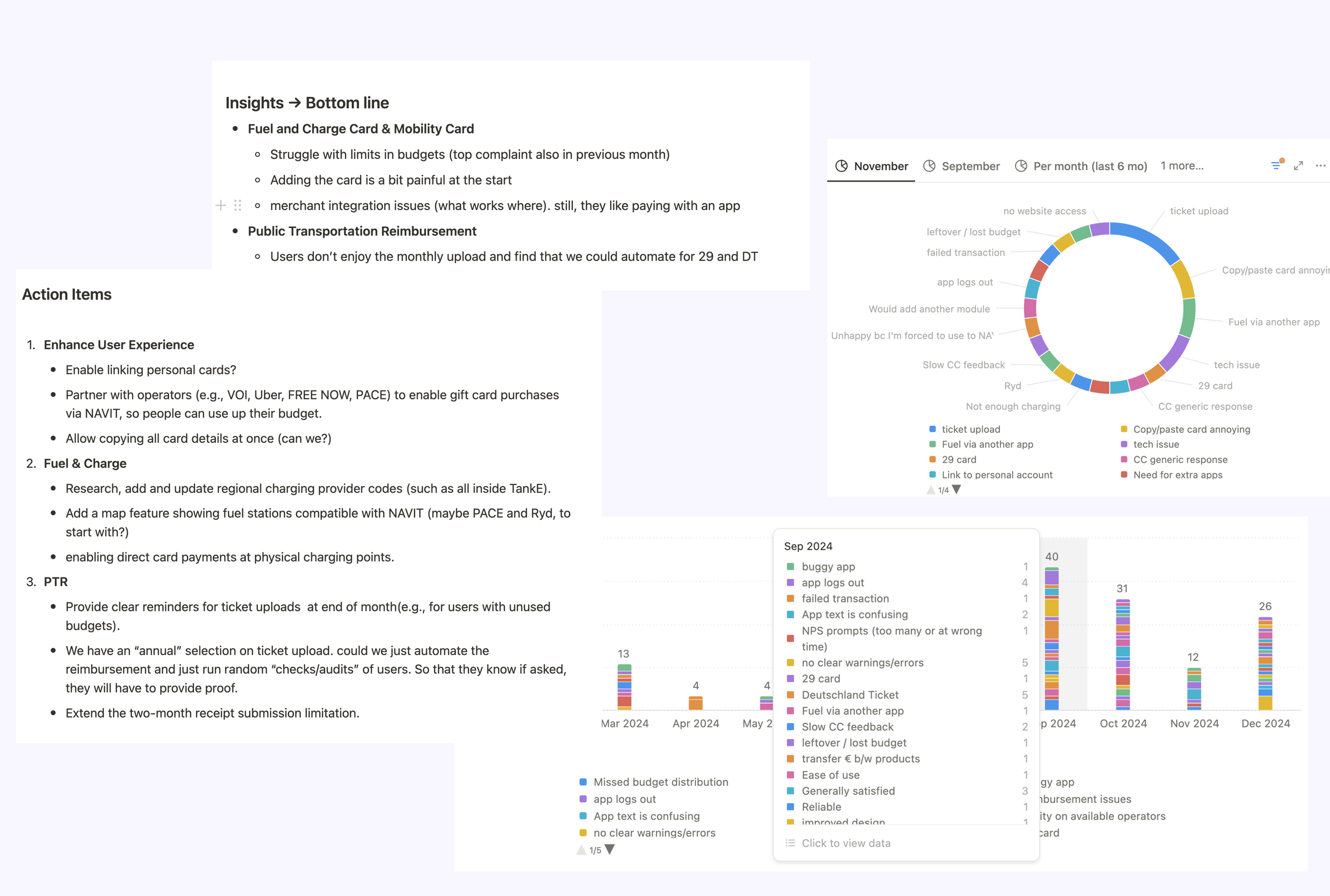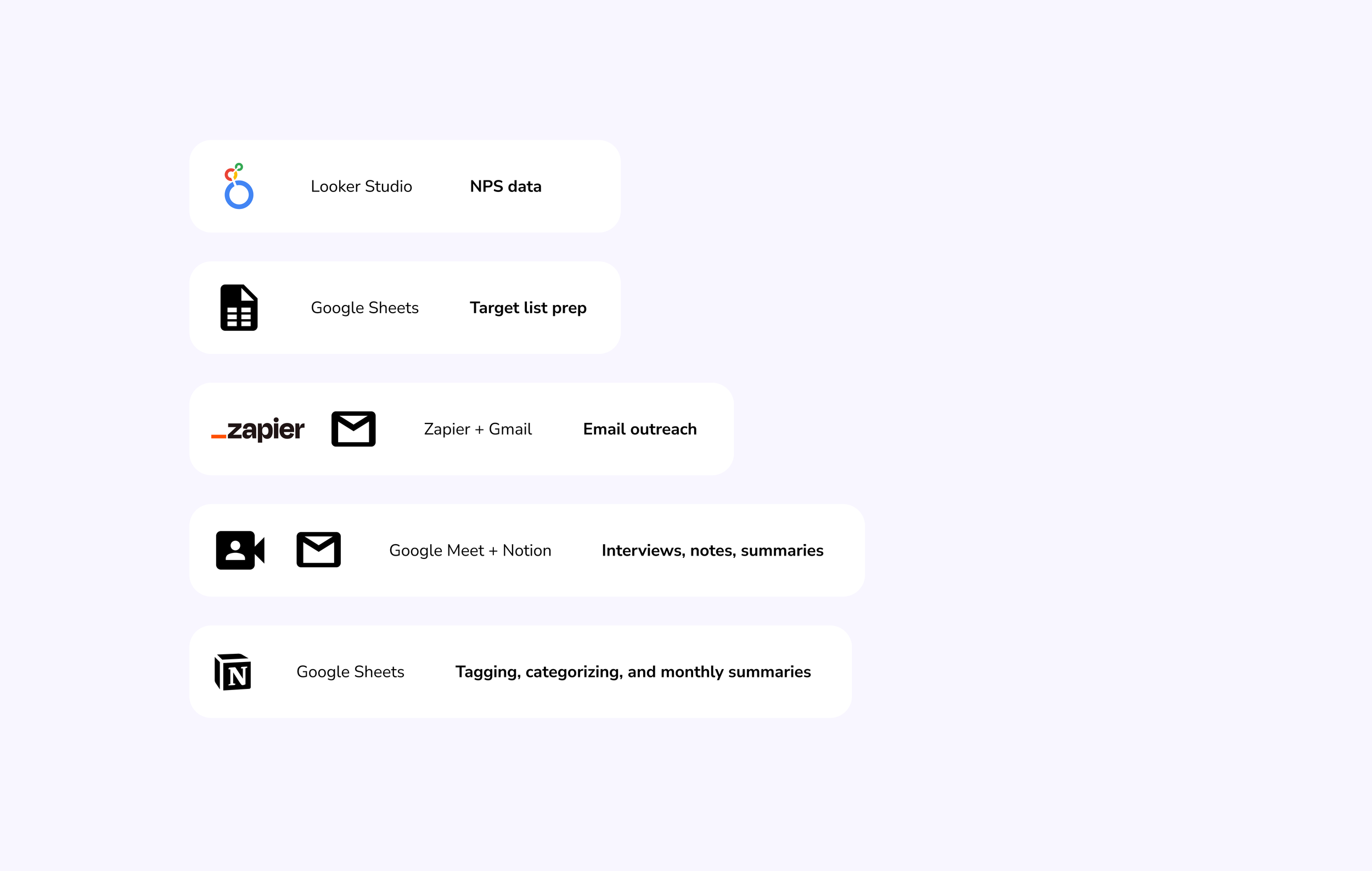
The Challenge
When I joined NAVIT, a mobility benefits startup, the product team was flying blind. There was:
No structured user research process
No analytics or usage tracking in the app
No feedback loops beyond customer support tickets
This meant product decisions were made with limited user insight, risking wasted effort and misaligned features. My first assignment was to implement NPS tracking—but I saw an opportunity to go further
The Goal
Introduce a lean, repeatable feedback loop that fits within:
A small startup team
No dedicated researcher or analytics tools
A product team eager for guidance but limited on time

What I Built: A Monthly Research Cycle
Week 1: Start With Signals
Pull NPS data from the past month, filtered to detractors (0–6).
Clean and segment users from high-priority companies (Based on account size).
Present a quick readout of last month’s findings to the team.
Week 2: Outreach
Email selected users on Monday using SendGrid via Zapier.
Follow up Thursday with reminders.
Users can opt for: A 15-minute call, or Email-based feedback
Week 3: Listen
Conduct 15-minute interviews via Google Meet (Recorded and Transcribed automatically)
Summarize calls with Ai, review and add personal notes.
Follow up with email responders to probe deeper.
Ask if users are open to future usability tests.
Week 4: Analyze & Share
Summarize calls outcomes with ChatGPT and review that it aligned with reality.
Tag key insights (e.g. “confusing payment,” “unclear benefit value”).
Group patterns → generate 2–4 key takeaways.
Add to the “Monthly Insights” hub, shared with the whole team.
-
“I’m happy you are reaching out... A lot of companies say they listen to their users but don’t really do it.”
User Feedback

Why It Worked
Zero additional budget required—used existing tools.
Repeatable and fast: One person could run it in ~3–4 hours/week.
Insights aligned with roadmap decisions (e.g. improved onboarding flow, clarified ticket pricing).
Helped the team refocus on the core user journey vs. chasing edge cases.
Gave stakeholders confidence in user alignment.
Why This Process Matters
In early-stage startups, it’s easy to defer research. But a lightweight process like this:
Keeps users part of every sprint
Avoids waste
Builds team alignment around what actually matters to users
Let me know if you want a version with visuals (e.g. flowcharts, sample insights, or Notion screenshots), or a 1-page PDF layout for your portfolio.
